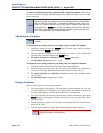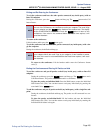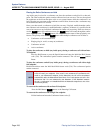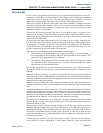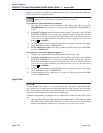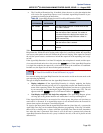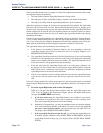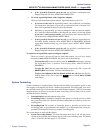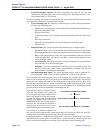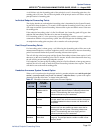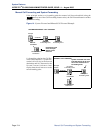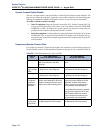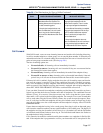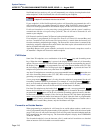
System Features
INTER-TEL
®
CS-5200/5400 ADMINISTRATOR GUIDE, ISSUE 1.1 – August 2005
Page 212 System Forwarding
• System Forwarding Advance: This timer determines how long the call will ring
(unanswered) before moving to the next forwarding point. The default value is 15 sec-
onds, and the range is 2-255 seconds.
For each forwarding path assigned to the endpoint, the system checks the following three crite-
ria to determine if and when a call should be forwarded:
• Type of incoming call: The following six different types of calls can be programmed to
be sent to the forwarding path:
— Outside calls received through a call routing table (including DID and E&M calls,
but not including DISA calls)
— Ringing outside calls
— Transferred outside calls (including Automated Attendant and Voice Mail trans-
fers)
— Recalling outside calls
— DISA calls (including DISA calls received through a call routing table)
— Intercom calls
• Endpoint status: The system recognizes four different types of endpoint status.
— No Answer: If the call is not answered at the principal station before the System
Forwarding Initiate timer expires, the system sends the call to the forwarding path.
— Busy: If the principal station is busy, the system immediately sends the call to the
forwarding path. Both “No Answer” and “Busy” can be selected together to form
a “Not Available” status.
— Do-Not-Disturb: If the principal station is in Do-Not-Disturb, the system immedi-
ately sends the call to the forwarding path.
— Immediate: The system immediately sends the call to the forwarding path. The
principal station user cannot answer an immediately forwarded call, but can
reverse transfer it from the forwarding point.
• Day-mode/night-mode status: The system day/night mode is used to determine if a
forwarding path is taken. Either day mode, night mode, or both may be specified.
For an example, refer to the diagram below. In the example, the principal station user wants
direct ring-in or transferred calls to ring at his or her endpoint during day mode. The principal
station has a forwarding path with two forwarding points: a hunt group and Voice Mail. If the
principal does not answer the call, it follows the forwarding path to forwarding point #1, a hunt
group. If the hunt group does not answer the call, it would continue on the forwarding path and
go to the principal station Voice Mailbox (forwarding point #2).
If the principal station is an Inter-Tel end-
point, the “ring principal once” option can
be set that will signal the principal station
when a call begins to follow the forward-
ing path. The signal to the principal station
consists of a display (CALL SENT TO
FORWARD PATH) and a single burst of
ring tone. The call cannot be answered at
the principal station, but can be reverse
transferred from the system forward point.
If a call rings in to multiple endpoints, and
one or more of those endpoints has system forwarding, the call will not follow any of the for-
warding paths. Agent Help requests will not follow any forwarding path.
If a principal station or a endpoint forwarding point is a member of a hunt group, calls placed
to the hunt group’s pilot number are unaffected by system forwarding. The hunt group calls
will be received at the endpoint as usual and will not enter the system forwarding path.
CALL RINGS IN TO PRINCIPAL STATION
CALL IS SENT TO FWD POINT #1 - HUNT GROUP
CALL IS SENT TO FWD POINT #2 - VOICE MAIL
NO ANSWER



